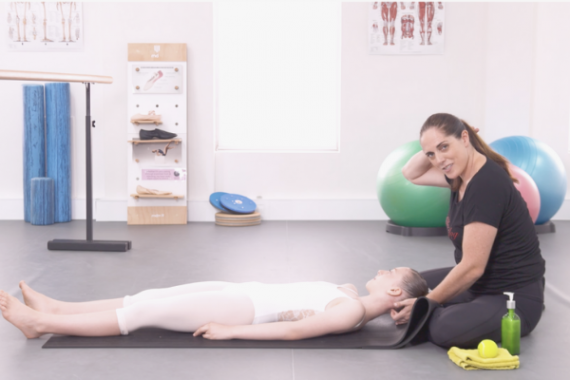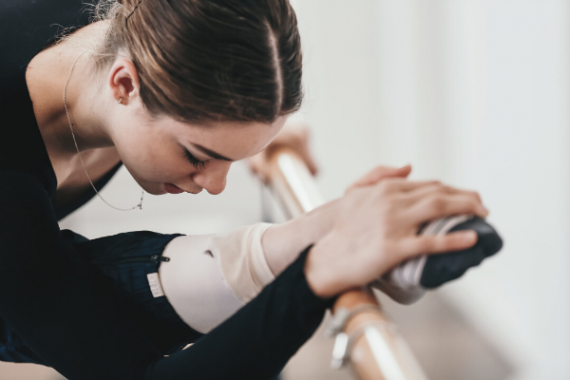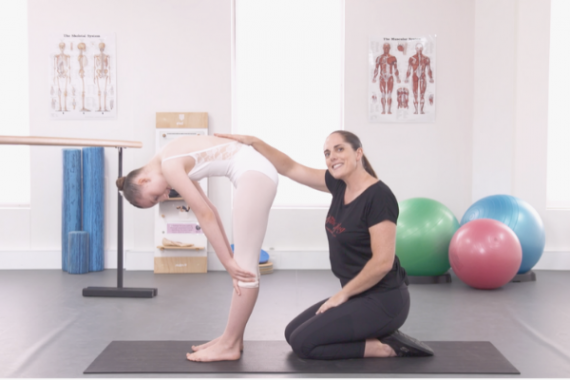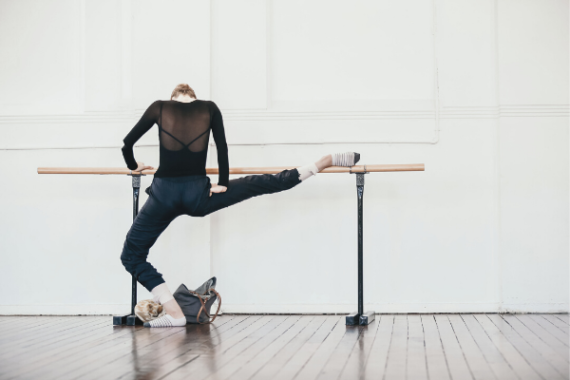- Free Articles
- Shop
- Workshops
- The Dance Educator Series
- L1 – The Fundamentals
- L2 – Pointe Intensive
- L2 – Flexibility Intensive
- L2 – Training Turnout in Tiny Dancers
- L3 – Foot & Ankle Injuries in Dancers – NEW
- L3 – Hip Injuries in Dancers
- L3 – How to Train Extreme Mobility Safely
- Upcoming Workshops
- Workshop FAQ’s
- Workshop Testimonials
- Host Application Form
- Dance Teacher & Health Professional Directory
- Members Areas
- Cart
- My Account
Foam Roller Work
Many people ask me if they should use a Foam Roller when working on their flexibility, so I wanted to explain why my thoughts on using a foam roller have changed over the years. Like many others, I was taught to use a foam roller down the ITB (Iliotibial Band, on the outside of the thigh), however I always found it excruciatingly painful and struggled with recommending it to others because I didn't see much of an improvement over time.
Then, as I learned more about fascia. I've understood why this is the case.
A lot of what we now know about fascia is it's need to be hydrated. When you are compressing the fascia with a foam roller (or any other tool) you're actually driving the fluid out. It's really not until you move past that you're actually getting some flushing of fluid into those systems as the pressure is released. Please keep this in mind whenever you are working on fascial mobility.
The ITB is not what you think...
Also, interestingly, the ITB doesn't actually exist as we have been shown it in anatomy books and pictures. Keep in mind that almost every single picture you have seen of an ITB will usually be a hand drawn illustration, or a photo of a specifically prepared dissection. When I was in our Anatomy wet labs at University, every dissection I saw had had been trimmed and cleaned, to clearly show the ITB down the outside of the thigh. A couple of years ago, I had the opportunity to do a wet lab dissection in Colorado Springs, in an amazing research lab there. One of the things that was astounding to me in observing an unprepared specimen was that the ITB does not exist, in the way I had been shown. There is a thickening of the fascia down the outside of the thigh, but it is continuous into the fascia of the front of the thigh, and also wraps around into the outer hamstrings on the back of the leg. There is also a continuation, down into the knee, then on to the fascia of the outer lower leg. At the upper end, the connection into the hip is continuous with the fascia that reaches up into the rib cage.
So it really is this whole lateral line that needs to be looked at, if there is tension down the outer thigh. Many people work on one just one segment, where they feel the most pain, often repeating the same exercise for years with no actual improvement.
Focus Points:
- Focus on the whole lateral fascial line
- Look at the muscles that feed into that area (Peroneals, TFL, Quadriceps, Lateral Hamstrings, TFL, Gluteals, Oblique Abdominals, Intercostals, lateral neck etc)
- If you have been over gripping your gluteal muscles to control turnout, or your pelvic stability is not very good, then this chronic contraction will lay down more facial tissue on the outside of the hip
- Chronic tension on the outside of the leg is often associated with weakness on the inside. Focus on improving stability and endurance in the deep inner thighs to stabilise the hip, rather than over-training the outer hip
- Dealing with the instabilities and imbalances that are causing this tension will be far more effective than repeatedly rolling the outside of the thigh with a foam roller
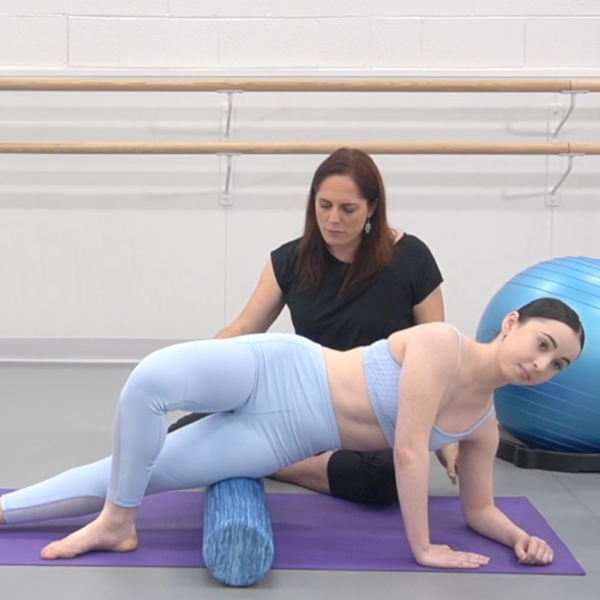
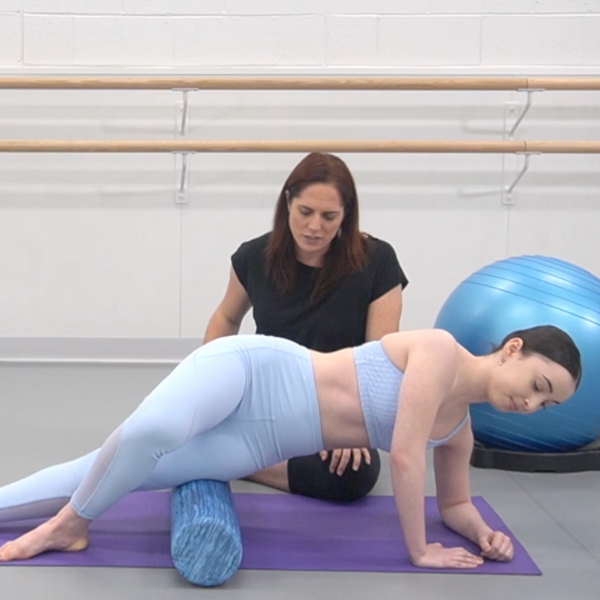
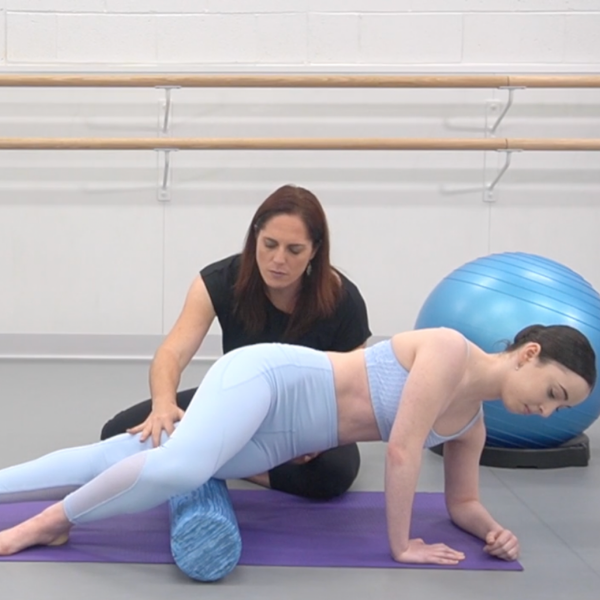
How to effectively use the foam roller
If you do not want to let go of using your foam roller just yet, try focusing on creating more hydration and shearing in the fascia rather than just compressing it.
How to do it:
- Start in side lying over the roller, with the top kne bent and the foot placed on the floor for support
- Make sure to stay supported through the upper body
- Use gentle pressure through the foot and elbow to lift most of the weight off the roller
- Gently explore the lateral thigh to find any particular points where the fascia feels a little stuck
- Instead of directly compressing the area, try drawing a square around it, by moving the body down, back, up, forward, down and back again
- Don't spend too long on each area, just repeat a few times to get some shearing between the layers
- Repeat on any additional points of tension down the outer thigh
- Also try rolling forward to explore the lateral quadriceps or rolliong back to work on the lateral hamstrings.
- After mobilising a few points, assess the effect by trying the lateral line mobilizer, comparing the side that hasn't been worked on with the side that has
Notes:
- The focus is on shearing the outer layers against the lower deeper layers
- Make sure the foam roller has a little bit of give, and is not too hard
- If you have a very hard foam roller, place the foam roller underneath a doubled up yoga mat to make it more comfortable
How to effectively use the foam roller
If you do not want to let go of using your foam roller just yet, try focusing on creating more hydration and shearing in the fascia rather than just compressing it.
How to do it:
- Start in side lying over the roller, with the top kne bent and the foot placed on the floor for support
- Make sure to stay supported through the upper body
- Use gentle pressure through the foot and elbow to lift most of the weight off the roller
- Gently explore the lateral thigh to find any particular points where the fascia feels a little stuck
- Instead of directly compressing the area, try drawing a square around it, by moving the body down, back, up, forward, down and back again
- Don't spend too long on each area, just repeat a few times to get some shearing between the layers.
- Repeat on any additional points of tension down the outer thigh
- Also try rolling forward to explore the lateral quadriceps or rolliong back to work on the lateral hamstrings.
- After mobilising a few points, assess the effect by trying the lateral line mobilizer, comparing the side that hasn't been worked on with the side that has
Notes:
- The focus is on shearing the outer layers against the lower deeper layers
- Make sure the foam roller has a little bit of give, and is not too hard
- If you have a very hard foam roller, place the foam roller underneath a doubled up yoga mat to make it more comfortable
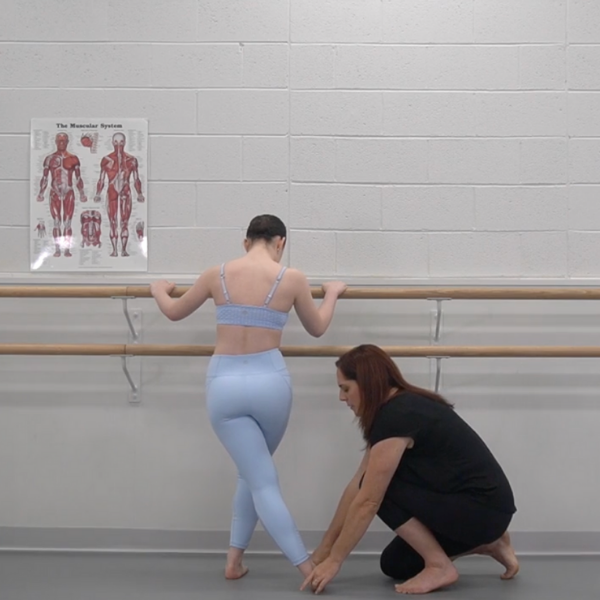
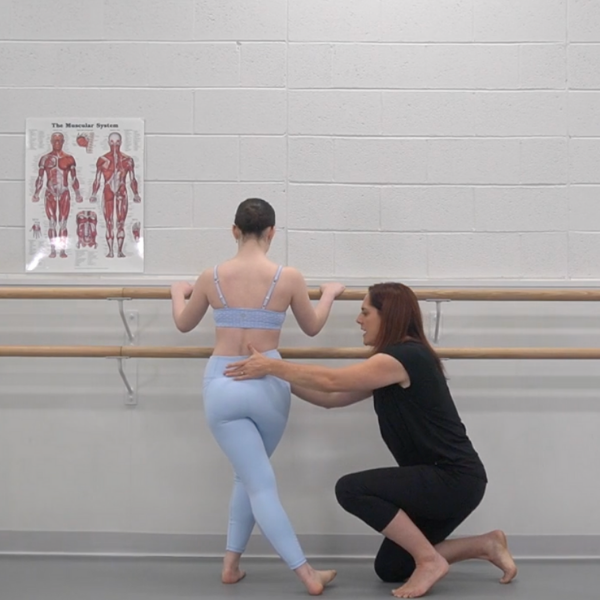
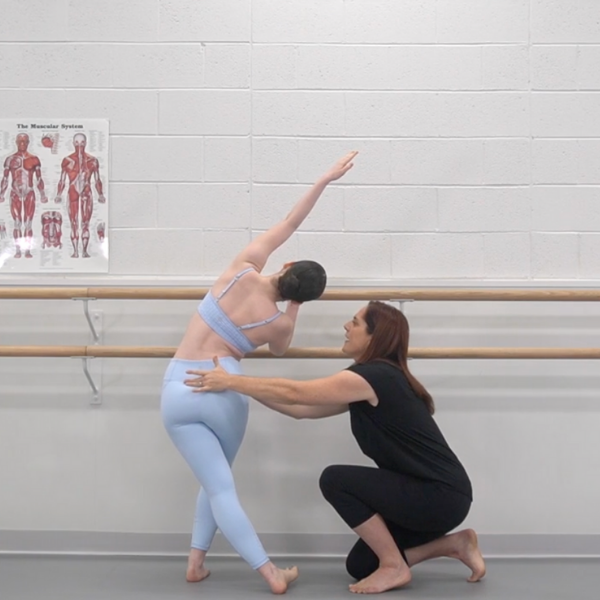
Flexibility Resources
If you are looking to delve deeper into this topic, check out the following programs:
- Front Splits Fast Program: This program translates therapeutic techniques for improving Fascial Mobility and Neural Tension into easy to do exercises that can enable instant changes in your flexibility without the risk of damage through over stretching.
- Level Two Online Flexibility Intensive: If you are dance teacher, this is the perfect continued education course for you. During this course you will understand the multifactorial nature to flexibility training. You will also explore safe ways of assessing exactly where each individual is restricted in order to create the most effective program.
- Level Three Online Flexibility Intensive on 'How to Train Extreme Mobility Safely': This workshop will help you assess your students in detail and be able to offer them effective techniques in a logical clear order to get them on the way to achieving THEIR optimal flexibility. It is also for teachers who are concerned at the extreme positions young dancers are wanting to work into, as it gives you safe guidelines on how to guide their development.



